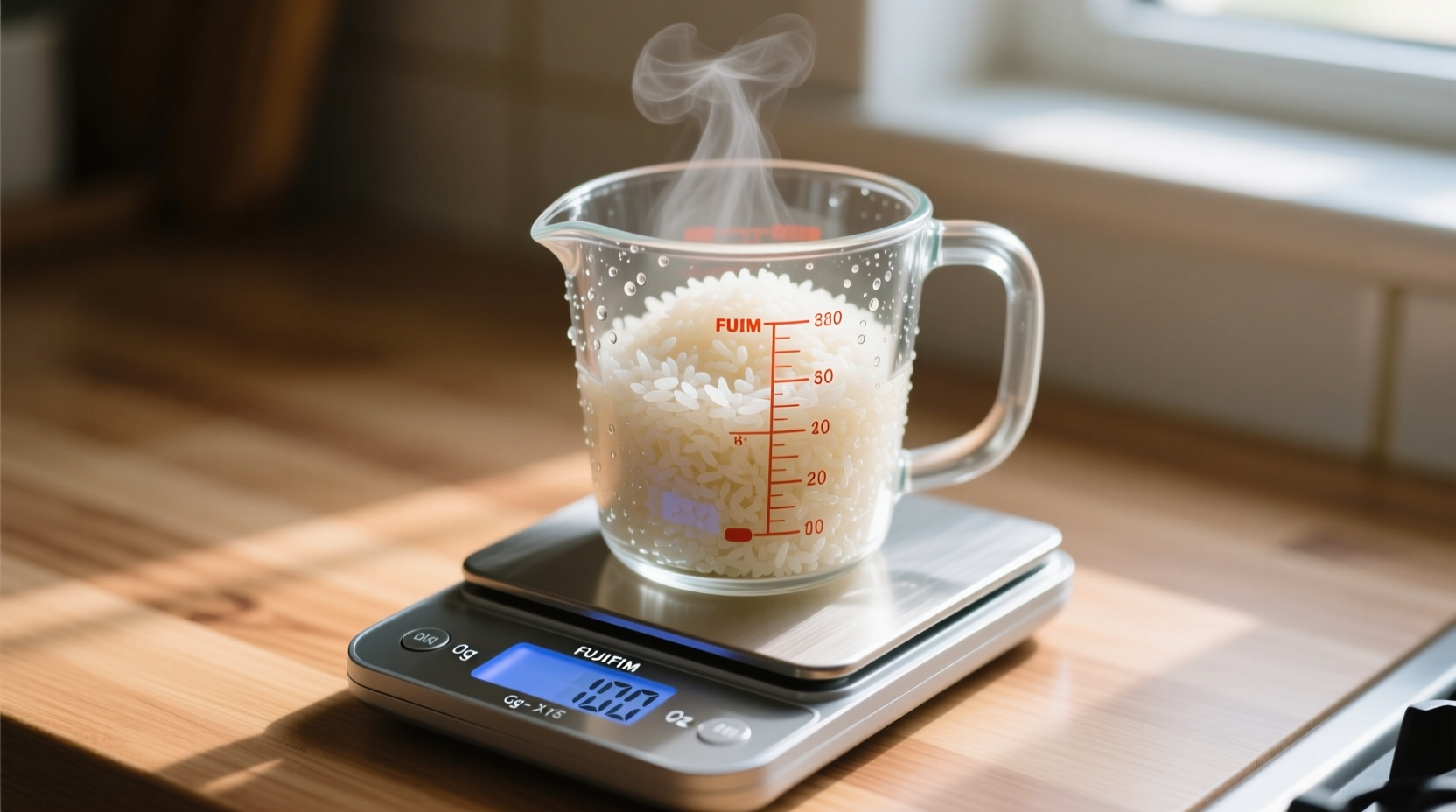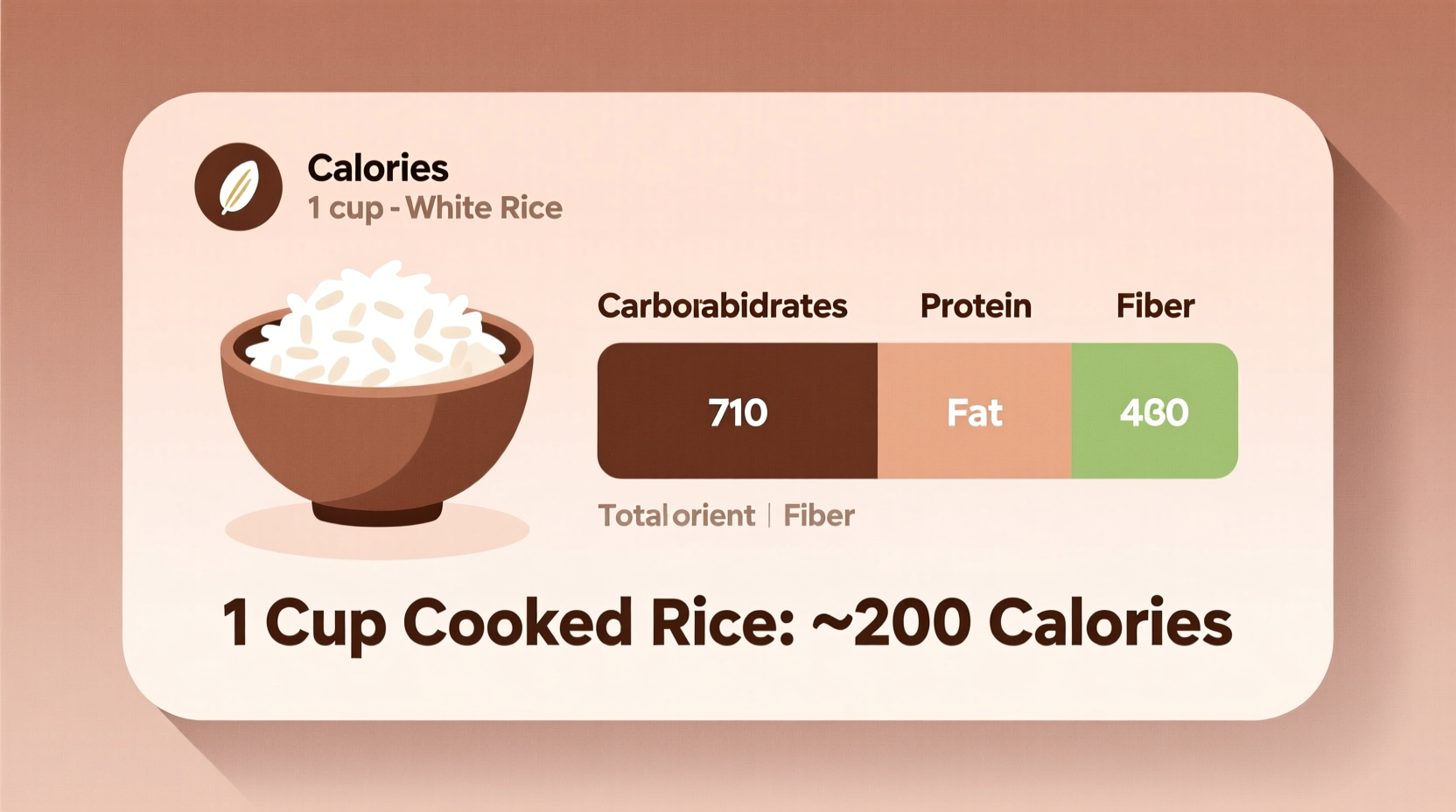Understanding the precise calorie content of common foods like rice is essential for meal planning, weight management, and maintaining balanced nutrition. Whether you're tracking your daily intake or simply curious about your favorite side dish, knowing exactly what's on your plate matters.
Calorie Content by Rice Type: Breaking Down the Numbers
Not all rice is created equal when it comes to calorie density. The specific variety, cooking method, and even grain length affect the final nutritional profile. Here's a detailed comparison of common rice types based on USDA FoodData Central measurements:
| Rice Type | Serving Size (Cooked) | Calories | Carbohydrates (g) | Protein (g) |
|---|---|---|---|---|
| White rice (medium grain) | 1 cup (158g) | 205 | 44.5 | 4.2 |
| Brown rice | 1 cup (195g) | 218 | 45.0 | 5.0 |
| Basmati rice (white) | 1 cup (150g) | 190 | 41.2 | 3.5 |
| Jasmine rice (white) | 1 cup (150g) | 200 | 42.0 | 3.7 |
| Wild rice blend | 1 cup (164g) | 166 | 35.0 | 6.5 |
This nutritional comparison comes directly from the USDA FoodData Central database, the most authoritative source for standardized food composition information in the United States. Notice that brown rice contains slightly more calories than white rice per cup, but offers additional fiber and nutrients due to the retained bran layer.
Factors That Change Calorie Counts in Cooked Rice
Several variables can significantly impact the calorie content of your cooked rice, making simple "per cup" measurements sometimes misleading:
- Cooking liquid matters: Preparing rice in broth instead of water adds approximately 10-15 calories per cup of liquid used
- Added ingredients: Butter, oil, or coconut milk can increase calories by 40-120 per tablespoon added during cooking
- Water absorption differences: Different rice varieties absorb varying amounts of water, affecting final serving density
- Packing density: How tightly you pack the cooked rice into your measuring cup can create up to 20% variation in actual portion size
For accurate tracking, use a food scale rather than volume measurements. A cup of fluffy jasmine rice weighs less than a firmly packed cup of sushi rice, resulting in different calorie totals despite identical volume measurements.

Putting Rice Calories in Nutritional Context
Understanding how rice fits into your overall dietary needs requires more than just calorie counting. Consider these important nutritional factors:
For an average adult following a 2,000-calorie diet, one cup of cooked white rice represents about 10% of daily calories but only provides 3% of daily fiber needs. Brown rice offers nearly 15% more fiber, making it a more nutritionally dense option despite the slightly higher calorie count.
Registered dietitians typically recommend that carbohydrates comprise 45-65% of daily calories. For most people, a single cup of cooked rice fits comfortably within appropriate portion sizes when balanced with protein and vegetables. The USDA MyPlate guidelines suggest making half your grains whole grains, which would mean choosing brown rice over white rice for at least some meals.
Practical Tips for Managing Rice Portions
Whether you're watching your weight or simply eating mindfully, these evidence-based strategies help you enjoy rice while maintaining your goals:
- Measure before cooking: One-third cup of uncooked rice typically yields one cup cooked, making pre-cooking measurement more accurate
- Cool before eating: Allowing cooked rice to cool creates resistant starch, which may reduce the glycemic impact by up to 30% according to research published in Nutrition Journal
- Pair strategically: Combine smaller rice portions (½ cup) with lean protein and non-starchy vegetables for balanced meals
- Choose whole grains: Opt for brown rice, black rice, or red rice when possible to increase nutrient density without significantly increasing calories
Remember that individual calorie needs vary based on age, gender, activity level, and health goals. The standard values provided represent averages for typical preparation methods and may differ slightly based on specific brands or cooking techniques.
Frequently Asked Questions
Here are answers to common questions about rice calories and nutrition:
Does the calorie count change if I rinse rice before cooking?
Rinsing rice removes surface starch but has minimal impact on final calorie content—typically less than 5 calories per cup. The primary benefit of rinsing is improving texture rather than significantly altering nutrition.
How many calories are in 1 cup of cooked rice versus uncooked?
One cup of uncooked white rice (about 185g) contains approximately 685 calories and yields roughly 3 cups cooked. This means the cooking process concentrates the calories per volume as water is absorbed, but the total calorie content remains the same.
Is day-old cooked rice lower in calories than freshly cooked rice?
Cooling cooked rice creates resistant starch, which may slightly reduce the digestible carbohydrate content. However, the calorie difference is minimal—about 5-10 calories less per cup. The primary benefit is a lower glycemic response rather than significant calorie reduction.
How does rice compare to other common carbohydrate sources?
Compared to other staples, one cup of cooked rice has similar calories to one cup of cooked pasta (220 calories) but fewer than one large potato (290 calories). However, rice generally contains less fiber than whole wheat pasta or sweet potatoes, affecting its nutritional density.
Does the cooking method affect rice calorie content?
The basic cooking method (boiling, steaming, rice cooker) doesn't change calorie content when using water only. However, adding fat during cooking (like butter or oil) increases calories proportionally to the amount added—approximately 120 calories per tablespoon of oil incorporated into the rice.











 浙公网安备
33010002000092号
浙公网安备
33010002000092号 浙B2-20120091-4
浙B2-20120091-4